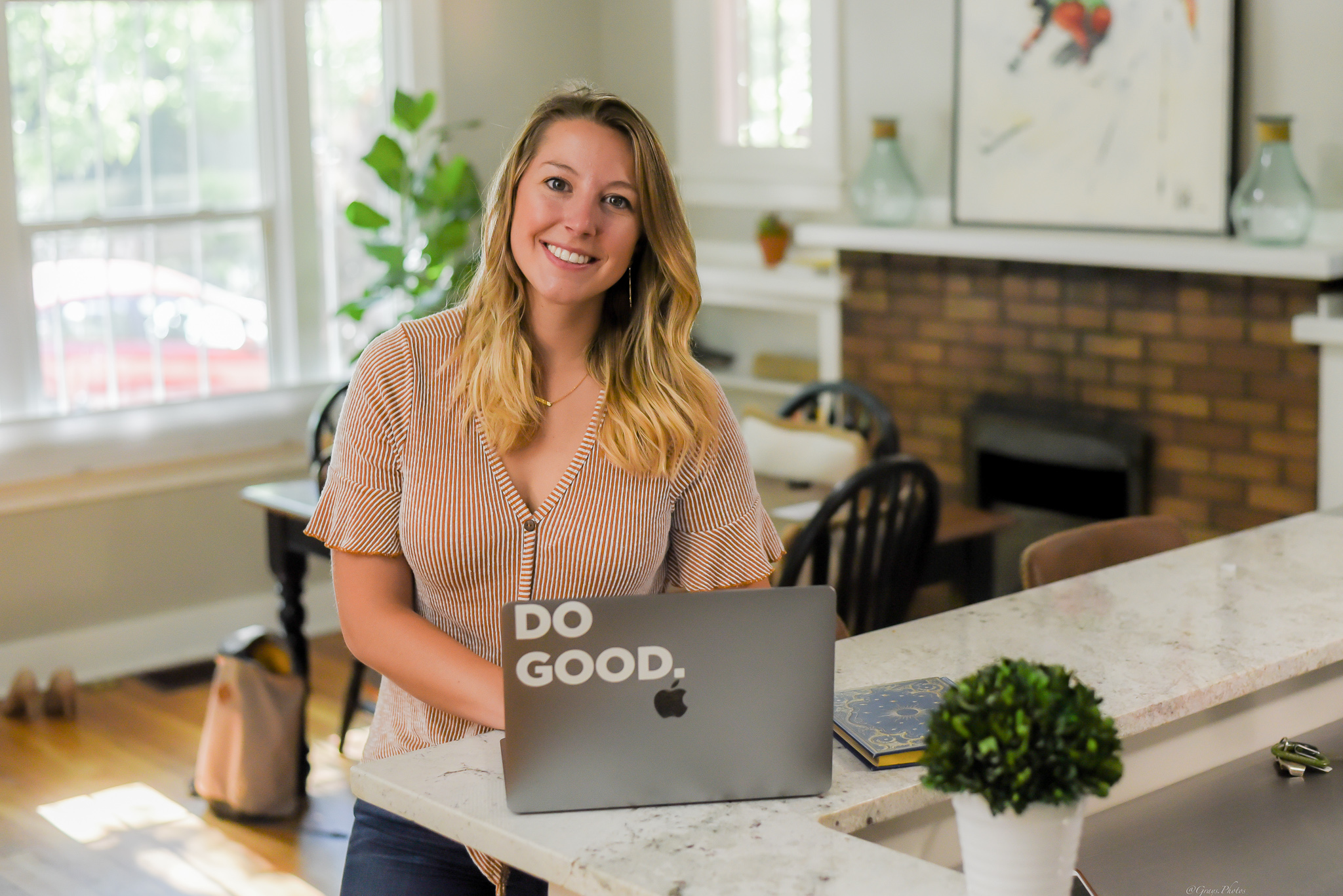
A website can serve as an amazing tool to inform countless potential clients about your offerings and convert leads for your business. However, when you are juggling so many things as a business owner, designing a website that works for you on top of everything can feel extremely daunting.
So I am sharing my best tips and general strategies to make sure your DIY website actually serves your business. Below you’ll find the 3 biggest mistakes I see with websites, and how you can avoid them.
1. Not answering the two biggest questions people want to know when coming to your site.
What do you offer?
How does it make my life better?
Ok so this is a HUGE one. Research shows you only have 7 seconds to engage someone and make a first impression when they first come to your website. You want to use your landing section to make an impact and tell the viewers what you do and how YOU can solve their pain point.
I see a lot of people who DIY their site just putting their name at the top, or just saying something generic like “Denver Therapist” for example. That won’t cut it in a crowded market. You need to show people why you are the right person to solve their problems.
This can be kicked off in your landing section with a value proposition – a statement of what you do and why you are uniquely qualified to help them. But you need to continue speaking to this throughout your site.
As a general rule, you want your viewer to be the hero of the story and you are the person that can guide them to these results. So, try and use a lot more statements that start with them as the subject instead of “We do x”.
You want your future clients to come to your site and think, “Wow, that is what I’m struggling with and they seem like the right person to help me solve it.” Not just oh this person lives in Denver and is a therapist.
Something that can help you get this value proposition down is diving into your target market to truly understand their pain points and what words to use to specifically speak to their issues. You want to get in their head and understand how you can easily connect with them.
2. Not having a cohesive brand
This one obviously makes sense as when you are DIYing your site, most likely you’re not a branding expert so it can be hard to pick all of the pieces that come together to create a consistent and cohesive experience for your viewer.
Where we want to start here is thinking through how you want to make people FEEL. What emotions do you want your brand to evoke? Do you want to make people feel welcome, at ease and like you are a trusted partner?
Do you want people to feel joy, bright, excited? Figure that out and then go to pick each of your elements with that feeling in mind.
Pick fonts that feel warm and welcoming if you are a therapist who wants people to feel that way. Pick colors in line with the same thing, pick imagery. You get the point.
ALWAYS evaluate those emotions when designing these elements.
When you choose these elements, make sure they all fit together nicely.
75% of users admit to making judgments about a company’s credibility based on their website’s design. So make sure yours is all coming together in a cohesive manner.
You don’t want fonts that feel welcoming and then a bright red color that feels in your face.
Also, stay consistent with your use of headers and body text. Use these in similar fashions so it makes sense to people and as they are going through your site they know what to expect from each layout.
One callout I wanted to make that is probably the biggest offender of misuse of fonts is illegible text. MAKE SURE your text is always clearly seen. Avoid white fonts on light backgrounds and dark fonts on dark backgrounds. Also, be careful when using handwritten fonts that all of the words are easily legible. Remember, you want a unique and beautiful site, but it also has to easily relay the information your clients need to know.
3. Not evaluating the user experience.
Your site isn’t meant to just sit there and look pretty. You have it for a reason and it should be your always on salesperson. Each page of your site should have a goal and be leading people towards converting on that goal.
Think through the user journey you want someone to experience when landing on your site. Is your main goal to get them to your services page from the home page? Is it to get them to sign up for your newsletter?
What actions do you want them to take on each page? Use CTAs (calls to action) aka those buttons you see on sites to guide them to the next step.
Think through the purpose of each page when designing it. Do you want people to contact you once they are on your about page? Put a CTA linking to your contact page and language that guides them there.
You should be subtly telling people what their next step is, don’t leave it up to them or else they might just exit.
—————
If you are looking for more guidance, email me at sydney@olivewingdesigns.com as I would be happy to answer any of your website design questions! Let’s put that website to work for you.